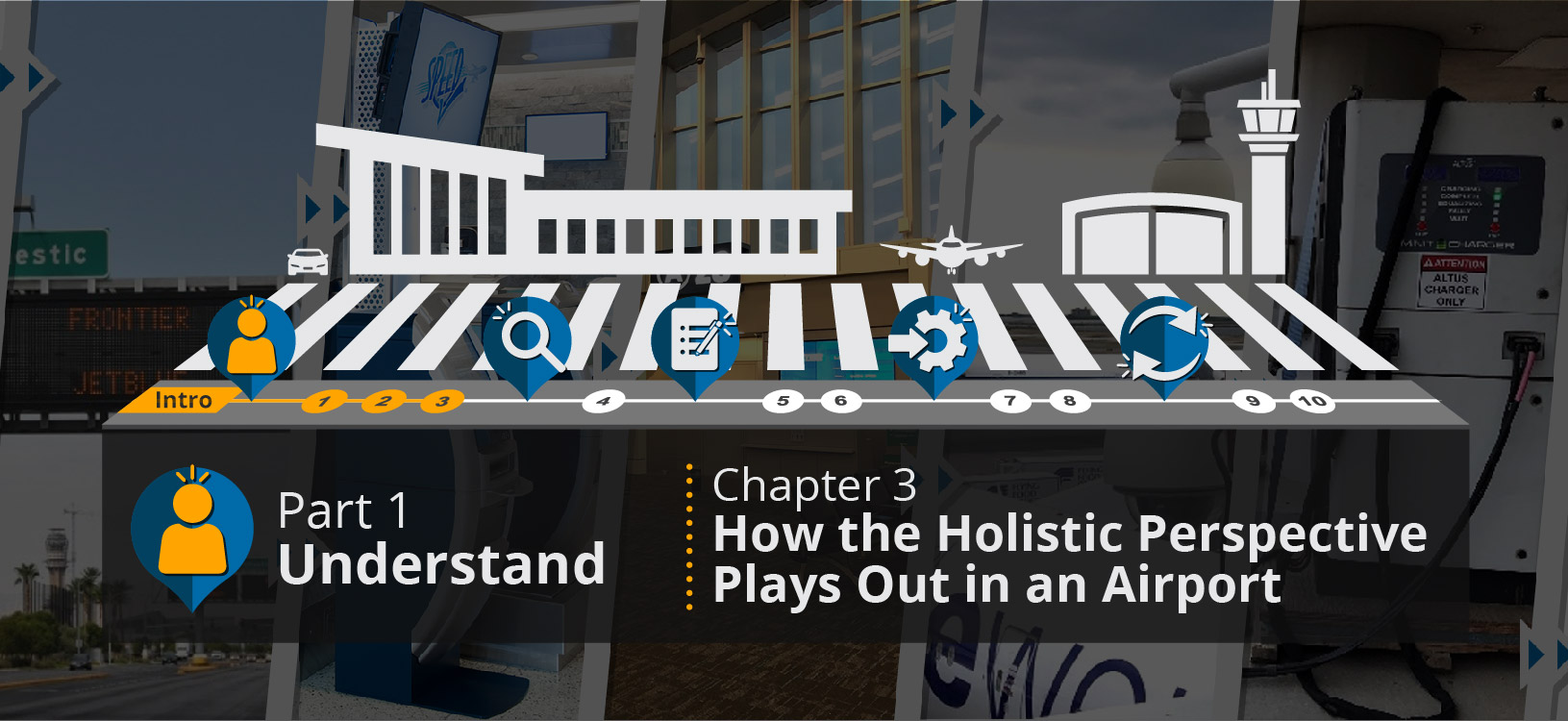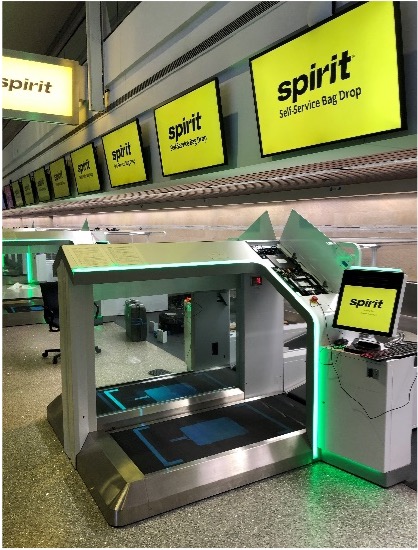
Common Use Infrastructure Planning and Design
Implementing common use applications in a terminal requires demonstrating the benefits of common use passenger processing and terminal operations to all stakeholders. The initial capital costs for infrastructure in a common use terminal facility are typically justified in terms of a reduction in life cycle costs, though this does not, by itself, support all of the associated initial hard construction costs for infrastructure. Given all the competing program and project functional elements required for an operating terminal, it is imperative that the overriding benefit of common use terminal operations-that of providing a flexible and adaptable environment that enhances the passenger experience-is prioritized in establishing design priorities with all stakeholders. Potential long-term costs and benefits for common use infrastructure need to be addressed in the early development of the terminal design, and stakeholders need to be involved in the planning, programming, and budgeting of these systems.
The following sections dive deeper into this topic, following the overall areas of the passenger journey.
Common Use Passenger Processing
Common use systems are integral to the efficient processing of passengers from curbside to gate. Non-proprietary positions and equipment provide great flexibility in passenger processing and the opportunity to optimize the overall facility.
- Curbside Check-In: Enables passengers to use all positions and distribute the processing equally along curbside.
- Check-In Lobby: The design of the lobby needs to be as flexible as possible for current and future technologies and equipment. The common use check-in operation offers the ability to change any check-in position to any airline, with digital signage offering the greatest flexibility. The only fixed elements in the check-in lobby are the baggage drop/slab conveyor openings. The design needs to accommodate one and two-step check-in processes with the capability for full-service operations. Optimal flexibility is possible with an in-floor duct system that is provided in a grid to allow varying configurations for check-in operations. This adaptable infrastructure can serve both freestanding self-check-in kiosks as well as inline check-in operations. The in-floor duct system can be achieved with a dropped floor slab and topping slab in the needed areas. This adaptable infrastructure provides the means for efficient distribution of power and data cabling to serve check-in equipment and the ability to upgrade and reposition equipment with minimal disruption. The planning should accommodate fully automated self-bag-drop check-in equipment and/or the infrastructure to incorporate in the future.
Security Screen Checkpoint
The range of screening equipment on the market and available for installation presents the same challenges as passenger check-in equipment. Passenger screening technology is constantly evolving, and the ability to change and reposition screening lanes is essential for efficient processing. Again, the optimal infrastructure is to utilize an in-floor duct system to provide the necessary flexibility. Even with a grid of in-floor ducts, positioning of this duct network is critical. Connection points to screening equipment vary by manufacturer, and in the planning of the security screen checkpoint (SSCP), test fits are recommended for multiple equipment manufacturers to optimize the placement of the in-floor duct system. The network of the in-floor duct system should extend from the TSA Travel Document Checker operations to recomposure areas and provide for future checkpoint expansion in either direction of the screening lanes.
Though the SSCP is not necessarily linked to common use operations, the checkpoint needs to be equipped with queue monitoring for passenger convenience and efficient processing. With digital screens displaying wait times, this system can meter passenger throughput and facilitate passenger separation during events such as the COVID-19 pandemic. Linked to the common use platform, passengers can be scheduled at specific times for security screening at check-in. Airport and/or airline applications can share this real-time information with passengers. The consistent real-time presentation of information to passengers in digital format reinforces common use efficiencies.
Common Use Gate Operations
The gate operations need to provide the same check-in flexibility as the check-in lobby, with the benefit of allowing any airline to use any gate via common equipment and a common network. Beyond providing accommodation for irregular operations, this gate flexibility offers optimal use of gates and gate turns. The infrastructure at check-in locations should be adaptable to provide for self-check-in operations and agent-assisted operations. In-floor duct systems positioned in select areas can provide this flexibility, but more often, point utilities (with slab poke-through devices) are provided, given the limited variants for equipment positioning in the gate check-in area. Power and data infrastructure can support agent positions and/or self-boarding operations.
Gate operations are typically supported by gate information displays (GIDS), and this digital technology extends to the exterior of the terminal with the visual docking guidance systems (VDGS), which is required to provide flexibility in gating assignments critical to the common use operations.
Common Use Baggage Systems
A common use infrastructure network must include connectivity to the baggage system operations and devices. The baggage system needs to have similar network cabling to provide the opportunity to redirect both outbound and inbound baggage to specific devices for optimal airfield operations. The airline data fed to the airport systems is based on the International Air Transport Association Baggage Source Message. Common use hardware must also support baggage tracking, sortation, and reconciliation. The baggage handling system interfaces with the gate VDGS to support the coordination of inbound flights and it is also an integral part of outbound baggage makeup.
COMMON USE INFRASTRUCTURE/SUPPORT SPACES
The successful integration of common use operations is dependent on the planning of the structured cabling system. This system organizes and distributes all necessary cabling, conduits/raceways, cable terminations, controls, systems, devices, electrical power, equipment racks/cabinets, and software to provide a complete operational system to support the common use operations. Horizontal cabling distribution should be run in cable trays that are easily accessible in plenum spaces and link all intermediate distribution frame (IDF) rooms to main distribution frame (MDF) rooms.
IDF rooms need to be positioned near local area requirements not to exceed 250 feet in linear distance with copper cabling. IDF rooms should be redundant to avoid loss of gate utilization. IDF rooms should also be connected to the MDF with dedicated fiber optic cabling. All communications connections should be Cat 6.
The redundancy of the MDF is critical for terminal operations. Full redundancy is recommended, and the location of the redundant MDF should be remote from the primary MDF with full capability. Emergency/backup power and dedicated air conditioning are required for all IDF and MDF spaces. Clean agent fire suppression systems are also required for these spaces to protect equipment, with no water running overhead the rooms or expansion joints lurking above a dropped ceiling.
The above infrastructure, with its designed redundancy, is recommended for 24/7 operations.
The systems critical to support common use operations vary from airport to airport, but typical systems linked within the terminal infrastructure include (but are not limited to) the following:
- Wireless Local Area Network (Wi-Fi)
- Telephone System
- Cellular Distributed Antenna System
- Radio System Headend/Remote Rooms
- Operations Control Center
- Multi-use flight information display systems; baggage, gate, and ramp information display systems
- Visual Paging and Variable Message System
- Building Management System
- Airport Operational Database to support airline common use platforms (such as common use terminal equipment or common use passenger-processing systems) and terminal common use self-service platform, as well as other systems
Relevant case study
One of the case study sites, Newark Liberty International Airport (EWR), developed an outline of the decision-making process and the commitment to common use for the new 33-gate domestic Terminal 1. Building stakeholder consensus was garnered through ongoing airline and airport workshops to demonstrate how the systems will provide the greatest level of flexibility for operations. The addition of a Terminal Operator (Munich Airport NJ LLC) was beneficial in that they are a strong proponent of common use operations and the implementation of supporting infrastructure in the design. Follow this link for a full summary of this case study.




